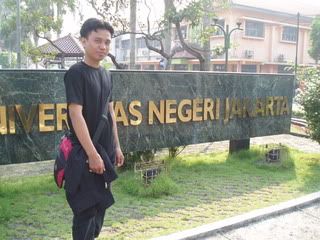A. Komplement 1 and komplement 2
1. Komplement 1
Komplemet binary 1 can be obtained by replacing all the bits 0 to 1, or bits 1 to 0.
Example:
Determine komplement 1 of the binary number 1001010
Answer:
Binary number 1001010
Komplement binary 1 0110101
2. komplement 2
Komponent 2 binary numbers can be obtained by adding 1 to the binary number komplement 1
Example:
Determine the complement 2 of the binary number 1001010
Answer:
binary number 1001010
complement binary numbers 1 0110101
+1
complement binary number 2 0110110
B. Bilangan Binary coded decimal (BCD)
BCD numbers reveal that each decimal as a nibble. Nibble is a string of 4 bits. This code allows you to display the numeric from digits 0 angkah sapai 9 as a digital clock or voltmeter.
Example 1:
Determine the number of decimal BCD 2954
Answer:
Decimal 2 9 5 4
BCD 0010 1001 0101 0100
Example 2:
Determine the decimal numbers of BCD number 101001110010111
Answer:
BCD 0101 0011 1001 0111
Decimal 5 3 9 7
C. Kode Gray
Gray codes are usually on mechanical encoder. For example, in the telegraph
1.Konversi binary to gray code
There are several steps to convert binary numbers into gray
a) Write down the binary number
b) is the MSB MSB binary gray code
c) Sum (using module2) the first bit binary numbers with two bits, the result is the second bit gray code
d) Repeat step c for the next bit
Example 1:
Change your code into its binary number 1001001 gray
Answer:
Binary Gray Description
1001001
1001001 1 MSB MSB Binary Gray = 1
1001001 11 1 modulo2 0 = 1
1001001 110 0 Modulo2 0 = 0
1001001 1101 0 modulo2 1 = 1
1001001 11011 1 modulo2 0 = 1
1001001 110110 0 Modulo2 0 = 0
1001001 1101101 1 modulo2 0 = 1
So, a binary number is 1001001 of the gray code is 1101101
2.Konversi gray to binary code
There are several steps to convert gray code to binary code:
a) Write down the binary number
b) is the MSB MSB binary gray code
c) Sum (using module2) the first bit number of gray with the second bit binary numbers, the result is a two-bit binary number
d) Repeat step c for the next bit
Example:
Turn gray code into a binary number 1101101
Answer:
Gray Binary Description
1101101
1101101 1 MSB MSB Binary Gray = 1
1101101 10 1 module2 1 = 0
1101101 100 0 module2 0 = 0
1101101 1001 0 module2 1 = 1
1101101 10010 1 module2 1 = 0
1101101 100100 0 Module2 0 = 0
1101101 1001001 0 Module2 1 = 1
So, the gray code is 1101101 of a binary number is 1001001
D. Excess-3 d.Kode
Excess-3 code is obtained by adding up the decimal values 3, then the change into a binary number.
Excess-3 Decimal Binary
0 0000 0011
1 0001 0100
2 0011 0101
3 0100 0110
E. ASCII e.Kode
Code ASCII (American Standard Code For Information Interchange), published by the American national standardization institutions. ASCII code expressed in binary bits. In addition to numbers and letters, this code also displays control characters such as EOF (end of file) as a sign akhit files and EOL (end of line) as a sign of the end of the line. This code is the most widely used in information exchange. Seven-bit ASCII code will produce 128 different combinations.










Posting Komentar